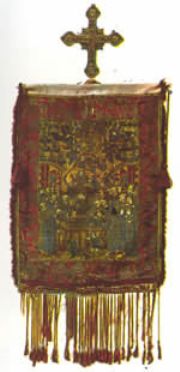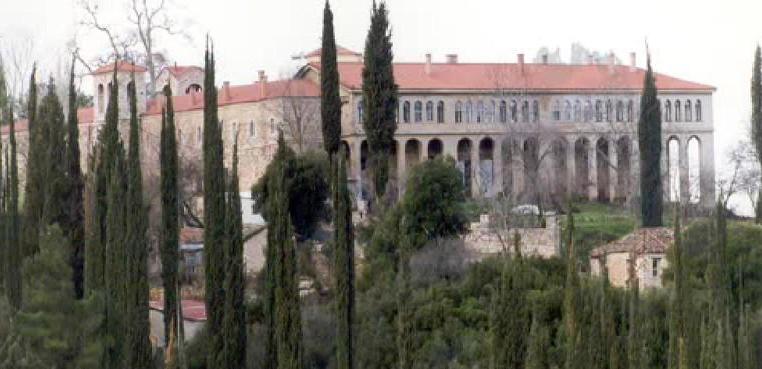
It is the well-known historic Monastery that is situated near Kalavrita of Peloponnese. There, on 18th March 1821, Bishop Paleon Patron Germanos Kotzas raised the flag of the Greek Revolution accompanied with rebels from Kalavrita.
The Monastery was built in 961 AD by a hermit of the Monastery of Megisti Lavra of Mount Athos and, in the beginning, it was Megisti Lavra’s dependency. Soon, however, the number of monks was raised up to 1000 and the new Monastery became independent, just keeping the name of the “mother” Monastery. For six consecutive weeks it had been very famous. In 1585, it was burnt by the Turks and the monks who survived from the slaughter escaped to the surrounding mountains. After 1600, it had been continually destroyed and plundered either by earthquakes or by the Turks. Also, in 1770, it was destroyed by the Albanians and in 1826 by Ibrahim. In 1828, the Monastery was rebuilt at the exact place where it is located now. In 1585, the temple of the Dormition of Virgin Mary (Kimiseos tis Theotokou), which is located in the precinct of the Monastery, was built.
The last very big destruction took place in 1943 by German forces. Having burnt the village of Kalavrita and having killed all the teenage boys who were residents of the village, they burnt the Monastery and all the monks who were there were murdered under the historic pine tree that is located in the precinct of the Monastery.
After the end of WWII, the Monastery was rebuilt in the way in which it is built today, which is the most ordinary in most Monasteries. There is a precinct, in the middle of which there is the temple and around it there are the cells. On the right of the main entrance of the precinct there is the chapel where the Revolution was announced and blessed by the Bishop Paleon Patron Germanos in 1821.
Holy relics: The flag of the oath of the Revolution of 1821 has been a valuable historic treasure for the Monastery of Agia Lavra. It is the first flag of the Hellenic Nation. Also, there is the “canopy over the Bier Cloth” (the tomb of Christ, Epitaphios) that was embroidered in Smyrna, the Icon of Saint George that was embroidered in Constantinople, the Gospel that was given as a gift from the Empress of Russia, Ekaterini II, Paleon Patron Germanos’ vestments, his pectoral medallion, his wood carving, etc. In the bookcase of the Monastery there are 3,000 documents, with the most ancient dating back to 1502.

Among the holy relics, there is the skull of Saint Alexios, the Man of God, and the skulls of the patron saints of Kalavrita, that were donated by the emperor Emmanouil Paleologos in 1398. There is also the skull of Saint Filaretos the Merciful (Eleimon), the relics of Saint Panteleimon and Saint Paraskevi as well as the relics of the Saints Anargyri. The Monastery of Agia Lavra is situated 5kms southwest of the city of Kalavrita.
Telephone number: 2692022363
Picture taken by: kalavrita.gov.gr











